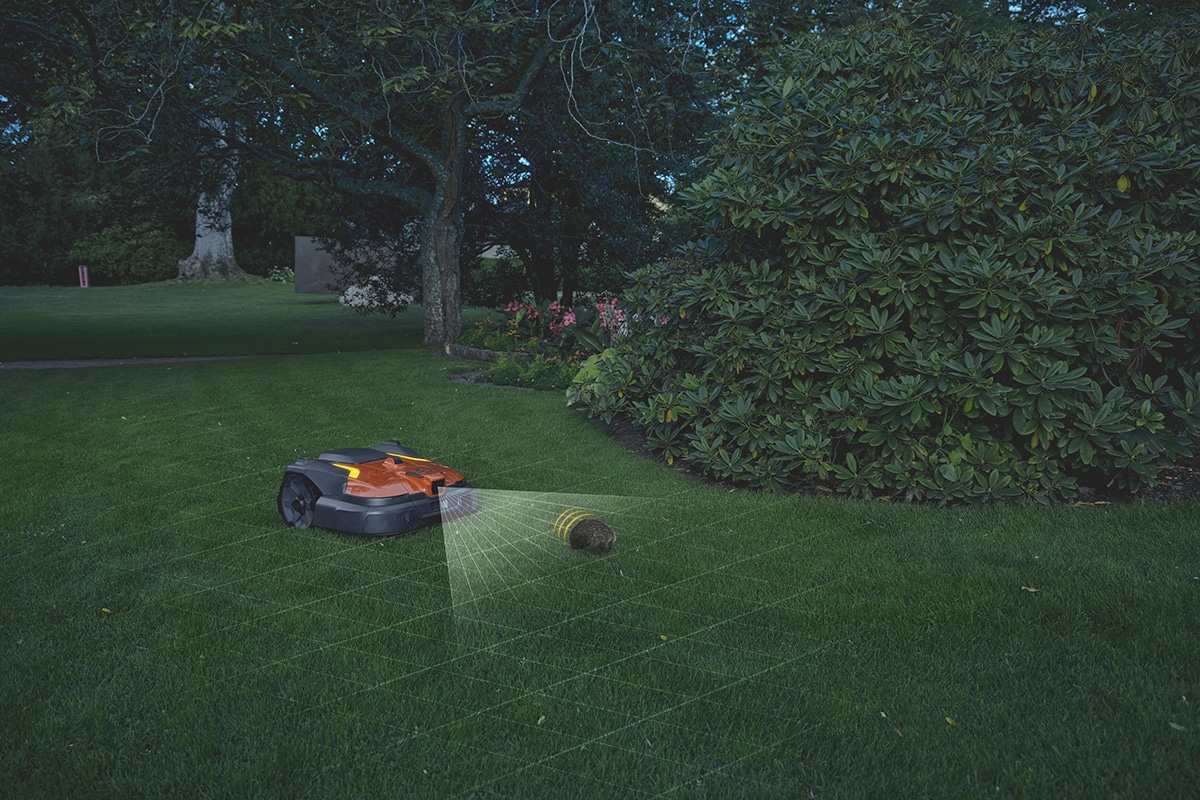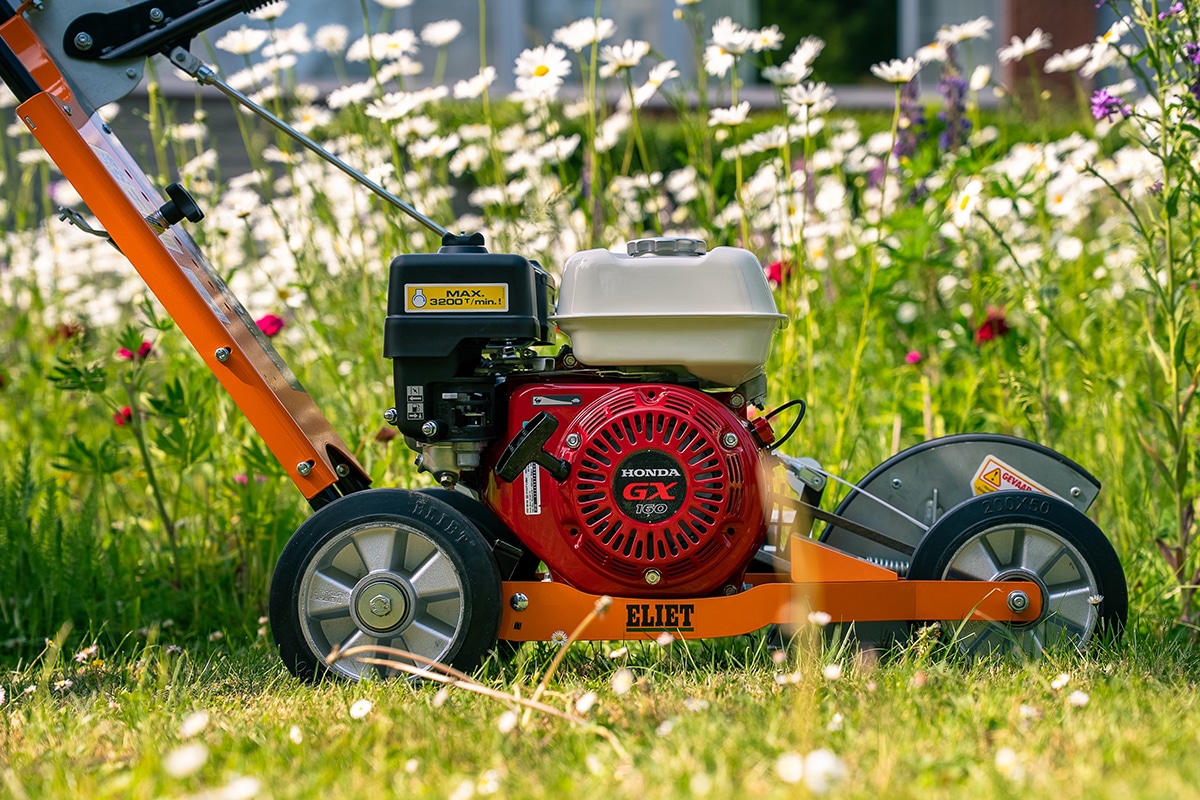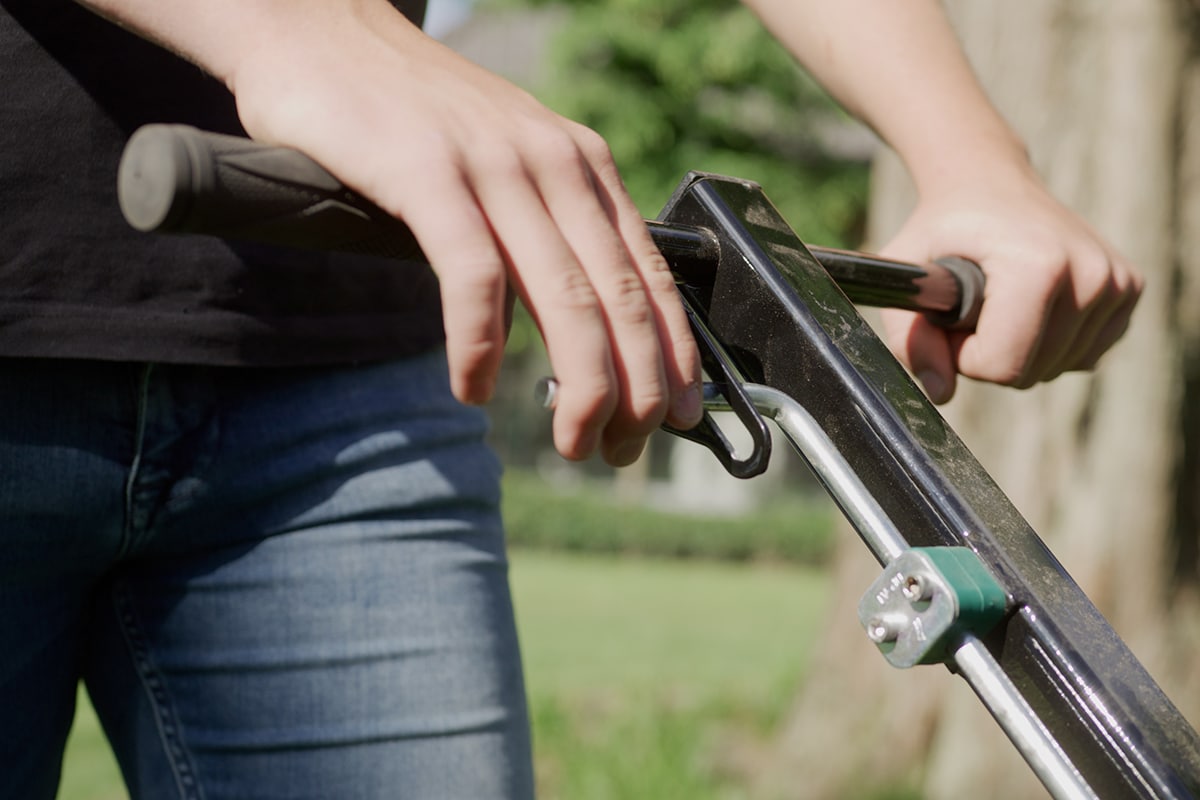
Looking back on 36th edition of Ghent Floralies
Paradise flowers and the Lamb of God: a successful marriage
The 2020 edition of the Ghent Floralies was postponed twice for known reasons. This year it was finally there: at the ICC, visitors discovered the best that Flanders has to offer in the field of ornamental horticulture. Pieter Toebaert and Jurgen Van de Walle look back on a successful edition.
After two years of forced postponement, the relief was great when the Flemish ornamental plant sector was able to meet again from April 29 to May 8, surrounded by the unseen floral splendor of the Floralies. The past two years have been a rollercoaster.
"In 2020, we were already very far along with production. We really had to cancel at the very last minute," recalls general manager Pieter Toebaert. "Especially the uncertainty was hard. Postponement, yes, but to when? First we were going to postpone everything for a year, but even in 2021 it proved impossible to organize the event coronaproof."
The organization found other ways to keep in touch with the public. Students told the story of the Floralies with online promotions and lectures and workshops were organized.
"That's how we managed to keep the connections between people and nature alive. This year we were there again, with as many as 295 exhibitors and hundreds of thousands of flowers. All participants showed unprecedented flexibility and commitment, for which we would like to expressly thank them."

My paradise, my worldly garden
Preparations for this edition saw the start of 2017. In the search for the artistic approach, the choice fell on "My Paradise" with baseline "My Worldly Garden.
Pieter Toebaert explains, "In our hectic society, people are increasingly looking for silence and peace, for themselves and for their personal paradise. Some find it in their green living room, others feel best in a park or in their own garden. In the secular garden, moreover, we think about native and non-native plants. If we look at history, we find that plants have always migrated over the centuries. By telling this story, we also wanted to embrace our changing society."
Moreover, in 2020, Ghent celebrated the Van Eyck year. The Lamb of God also depicts a kind of paradise and proved to be a rewarding setting to highlight ornamental cultivation. Toebaert: "In 2020, we would have been the second largest exhibition around Van Eyck. Now we consider ourselves lucky to have organized the final event around the Van Eyck theme, so to speak."
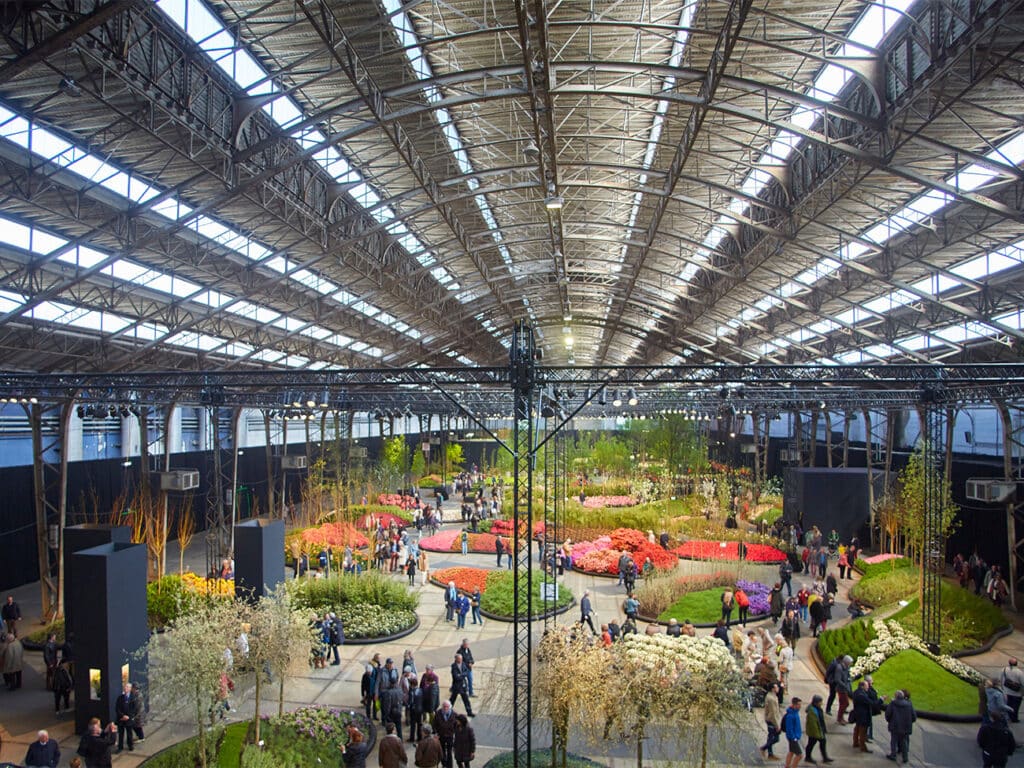
Lamb of God in the spotlight
The eye-catcher in the Floralies Hall was undoubtedly the group booth of ornamental plant and greenery federation AVBS. The architectural team consisted of Inge De Bruycker, Inge Vanoverbeke and Jurgen Vandewalle, who chose the central scene of the Mystic Lamb with the garden of paradise as their target image. Together with 75 nurseries, they set up the large-scale artistic booth. In addition to plantings of floricultural and arboricultural products, there was also room for three artistic flower stands, including one cut flower stand. AVBS' group booth covered 2,000 square meters, displayed 350 varieties and tens of thousands of plants.
For the skeleton of the Lamb made of metal, cooperation was established with the Wetterse Scheppers Institute. The head of the Lamb was covered with freeze-dried leaves. The flowers for the body were pre-grown in several stages and supplied by Florensis.
"A lot of thinking, cultivation and construction work preceded this realization," says landscaper Jurgen Van de Walle. "And it paid off. The stand was visible from different angles and the Lamb played such a central role."

Success through cooperation
"The design for our booth was finished two years ago," says Van de Walle. "We did have to rework it a bit after corona. Several plants changed due to growth or availability, some growers dropped out and others joined. We are incredibly grateful to the group for making the adjustment twice. After all, in order to have plants ready on time, growers have to shift gears months in advance."
Van de Walle does like a challenge, he says, and working with such a large team is at least that. "In the design, with the three architects, we each brought our strengths to achieve a successful whole. Led by AVBS, we organized grower meetings to hear what was feasible for them and what wishes they had. It is intense to get everyone on the same page, but also very fascinating. During construction and dismantling we worked as one team that was well attuned to each other, so everything went smoothly."
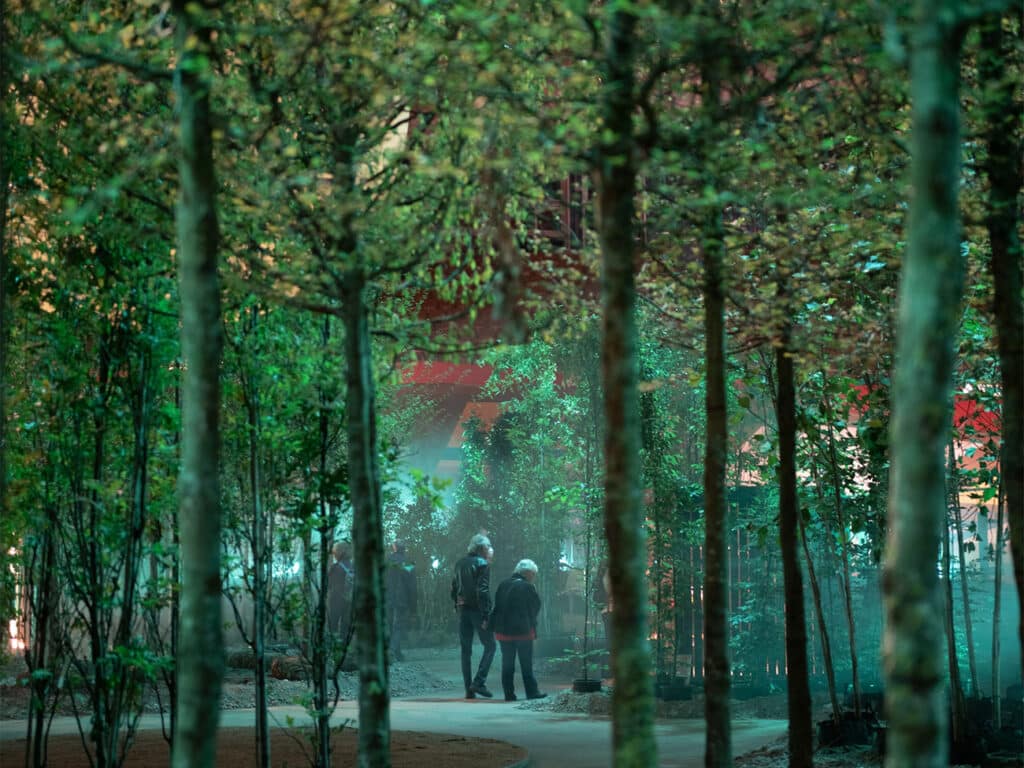
Innovation and sustainability
There is also guaranteed to be room for innovation at the Floralies. "In innovation, sustainability is also central," says Pieter Toebaert. "In the botanical garden of Ghent University, we show scientific developments in the sector to the public." Today, for example, research is being done on tree varieties that can better withstand drought and thus be more viable in a changing climate.
"For our group booth, we also found a lot of ways to consider climate and sustainability," Jurgen Van de Walle says. "The growers worked well together to bundle transport as much as possible." The people in the Lamb of God painting were also represented by large trees and shrubs. "In cooperation with tree nursery De Bruyn, we provided special water bags that allowed water to seep through in mouthfuls. This kept the trees beautiful for weeks and allowed us to avoid wastage."
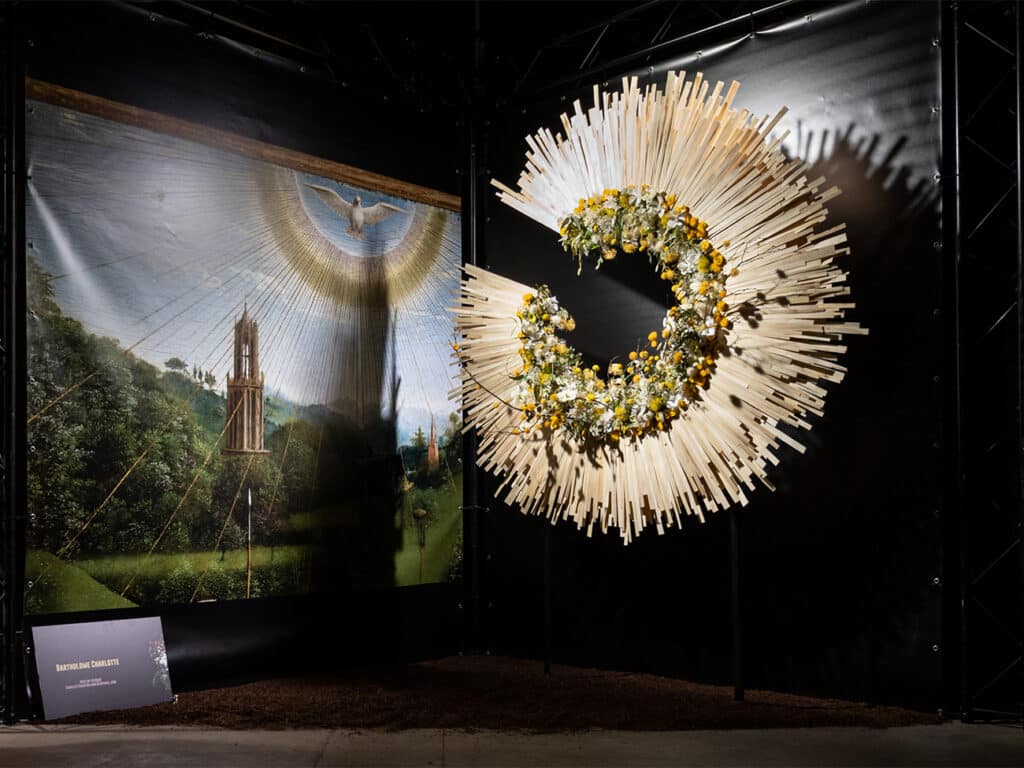
Flowers for the people of Ghent
After the event, as many plants as possible were sold to the people of Ghent. The proceeds of the sale go to projects of the King Baudouin Foundation and the forest expansion area at the Leen in Eeklo. Trees from the forest in 't Kuipke will also be given a second life as a forest expansion area in East Flanders. Edition 2022 of the Floralies of Ghent drew 75,000 visitors. Toebaert: "We saw a general satisfaction among the participants and among the public. I think we are in good shape. The sector was well represented and the public found us again. We are secretly already looking forward to the next edition, at a new or completely renovated location."

